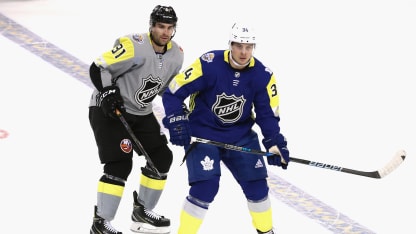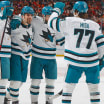It's uncertain which role would be assigned to Tavares if the Maple Leafs use a similar deployment. Tavares was used in the Malkin role with the Islanders. His zone-start percentage of 59.86 is No. 17 among forwards who have played at least 100 games since 2009-10, his rookie season. His NHL career high in points with that usage is 86 points in 2014-15.
Tavares has solid shot-based metrics, and is capable of handling big minutes in a Crosby role against top opponents.
Since 2009-10, Tavares' career average of 16:09 even-strength minutes per game is No. 9 among NHL forwards. In that time, the Islanders have outshot opponents 10,230-9,866 in 5-on-5 shot attempts with Tavares on the ice, for an SAT percentage of 50.91 percent. That's up 3.38 percent from their 47.53 SAT percentage when he wasn't on the ice.
Playing Tavares in the more-demanding Crosby role would free up Matthews to focus on scoring. During the past two seasons, Matthews has averaged 2.63 points per 60 minutes at even strength, which is better than Tavares (2.33).
Regardless of role, Tavares should boost the scoring rates of his linemates, most likely Mitchell Marner and Patrick Marleau.
Islanders forward Josh Bailey, playing primarily with Tavares during the past two seasons, scored an average of 2.15 even-strength points per 60 minutes. In the two seasons before that, playing on a different line, Bailey was at 1.77 even-strength points per 60 minutes. Similarly, Anders Lee improved by 0.29 points per 60 minutes, from 1.81 to 2.10.


















